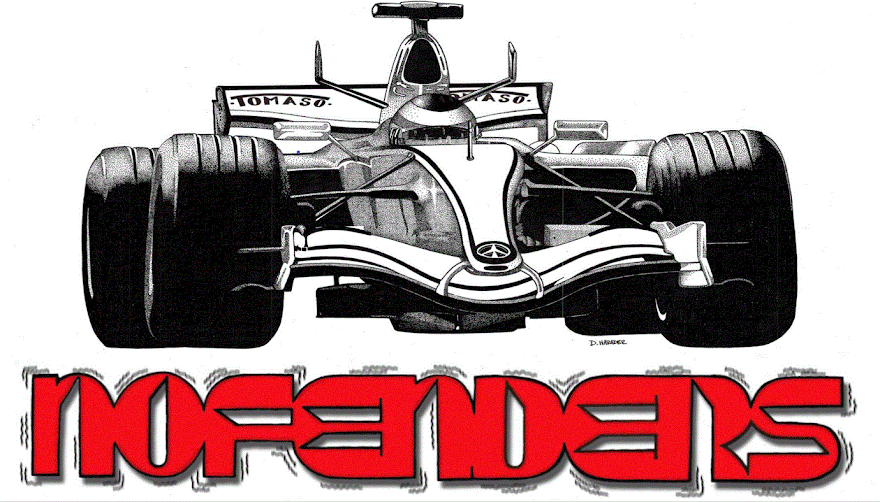As this Canadian “Chairman of the Board” definitely
played His own tunes…
So, when I began this, I knew very little about
Walter Wolf. Other than briefly owning a formula 1 team during the late 1970’s.
As I’d never heard the story about Wolf winning
that bet with Enzo Ferrari that netted Him a pristine Ferrari 512BB.
But I did know about His connection to
Lamborghini, specifically the Countach. Which arguably has to be one of
everyone’s favourite Cult Supercars! As I even own an Kyosho Bugatti “royal”
blue 1:18 LP400 Special Diecast example, which I procured several years ago, or
was it decades? (Before Kyosho reintroduced them)
Whilst I was unaware that He had commissioned
Kremer to build Him the one and only Kremer Porsche 935 street car! Which mut
have been a Holy terror to drive Up North eh! Where they only have two season:
“Winter and Road Construction!” According to the late “Rhythm Professor” Neil
Peart.
As Y’all can read
about Wolf’s Supercar exploits, including the Lamborghini Miura produced for
His wife in the following link…
https://supercarnostalgia.com/blog/walter-wolf
As Wolf, who immigrated to Canada with His
family in 1960, ultimately made His money in the North Seas Oil speculating
business.
As Wolf who’d worked as an apprentice mechanic
in Germany, also worked as a Diver installing pipes and bridge foundations,
before buying a controlling stake in the faltering company. Which allowed Him
to expand His business reach.
During the 1970’s due to the volatile price of
Oil, Wolf made multi-millions and His fortune in the transportation of cargo,
exploration and extraction services of Oil in the lucrative North Sea.
But this story is supposed to be about Walter
Wolf’s involvement in formula 1, having last left off with Wolf having decided
to go “solo” and set-up Walter wolf Racing for the 1977 Formula 1 season.
Needing their own chassis, Wolf had Harvy
Postlethwaite design the Wolf WR1, along with hiring Jody Scheckter from F1
rival Tyrrell. With a total of four Wolf WR1 chassis being produced.
Arguably, Scheckter shocked the F1 Fraternity
by winning for Wolf upon the car’s debut at the ’77 Argentine Grand Prix.
Before Schecter would win the aforementioned Monaco Grand Prix, and later
Wolf’s home Grand Prix at what later became known as Circuit Gilles Villeneuve
on the Il Notre Dam.
Scheckter’s three victories along with a total
of nine podiums enabled the South African driver to finish runner-up in the F1
World Championship behind Niki Lauda and Ferrari that year, with the team
finishing fourth in the F1 constructors Championship.
As both results would be the zenith of Walter
Wolf’s involvement in Formula 1, before it’s steady downfall. As two Wolf WR1
chassis were modified for the 1978 season, with Scheckter scoring one final
podium at Monaco. Then a further three podiums, four overall; netting Him
seventh in that year’s F1 Championship. While Wolf fell to fifth in the
Constructors Championship.
Yet with the arrival of Ground Effects and the revolutionary
Lotus 78, the Wolf WR1 became obsolete. Being
replaced mid-season by Postlethwait’s WR5 Ground Effect chassis. Which was
followed at season’s end by the Wolf WR6, with Scheckter scoring a second place
finish in both chassis.
Meanwhile two Wolf WR1 chassis were transferred
to Theodore for Keke Rosberg to drive in ’78.
For 1979, Scheckter departed for Ferrari,
ultimately winning that year’s Driver’s title, with Wolf hiring James Hunt as
His replacement. Hunt toiled aboard the team’s WR7 and WR8 chassis, suffering
from reliability issues and then retiring from Formula 1.
Hunt was replaced by future Formula 1 World
Champion Keke Rosberg, who had little success with the team’s WR9 chassis.
At season’s end, Wolf sold His team to the
Fittipaldi brothers F1 team ultimately known as fittipaldi Automotive. With
Fittipaldi absorbing the Wolf assets in order to expand to a two car entity.
Featuring Emerson Fittipaldi as the team’s lead driver, with Keke Rosberg as
teammate.
Emerson Fittipaldi, who’d shockingly moved to
His own Formula 1 team for the 1975 season, saw the Brazilian effort run nder
the Copersucar banner until the end of 1979, when they ended their sponsorship.
With the team finding new sponsorship from Sko and expanding to a two car
effort for the first time in 1980.
Interestingly, once again Messer Postlethwaite
transferred to the new ownership, ultimately the fourth team thru it’s
succession of owners. Where He was joined at Fittipaldi by a fresh faced college graduate named Adrian
Newey, with the pair collabourating upon the Fittipaldi F8 racecar.
Postlethwaite was then lured to Scuderia
Ferrari and Newey moved to March, first as a race engineer and then designing
it’s winning IMSA GTP racecar. While Emerson Fittipaldi retired from racing in
formula 1 at season’s end, taking a managerial role in the team.
Ironically, Keke Rosberg joined Williams Grand
Prix Engineering for 1982, where He went onto win that year’s F1 World
championship! Whilst Fittipaldi soldiered on now as a single car entry with
Brazilian Chico Serra, who’d replaced Emerson as Rosberg’s teammate for
the ’81 season.
Arguably, one could say this was the beginning of the downfall of Fittipaldi Automotive, for which Emerson and company pulled the plug upon their Formula 1 operation at the beginning of 1983, failing to find any sponsorship to continue. Which in itself was the end of the Garagists era, along with the end of the long dominant Ford Cosworth DFV V-8 lumps’. As the sports first turbo era was set to begin. Whilst Walter wolf was busy with His new motorcycle racing ventures in Japan…
